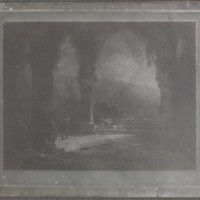
Most people think of the Daguerreotype, named after Louis Daguerre, to be the first photographic process. However, Joseph Nicephore Niépce, a French inventor, is actually known by experts to have created the first etched ‘photographs’ on plates made of pewter. And now, scientists from the Getty Conservation Institute in Los Angeles are revealing that Niépce used a previously undiscovered chemical process that consisted of baking lavender oil.
Dusan Stulik of the Getty stated that scientists are now ‘able to create a fuller picture of Niépce, how he worked, and we can really demonstrate that everything related to photography that surrounds us today – digital cameras, film, TV, even 3D and video games, go back to his inventions.’
The new analysis of Niépce’s plates are being announced at a conference in the UK at the National Media Museum this week. Current literature regards Niépce as a key pioneer in the field of photography, however the new studies clearly show that his contributions are far more valuable than previously thought, and Niépce should be regarded as the true inventor of photography.
Headsup to The Guardian





